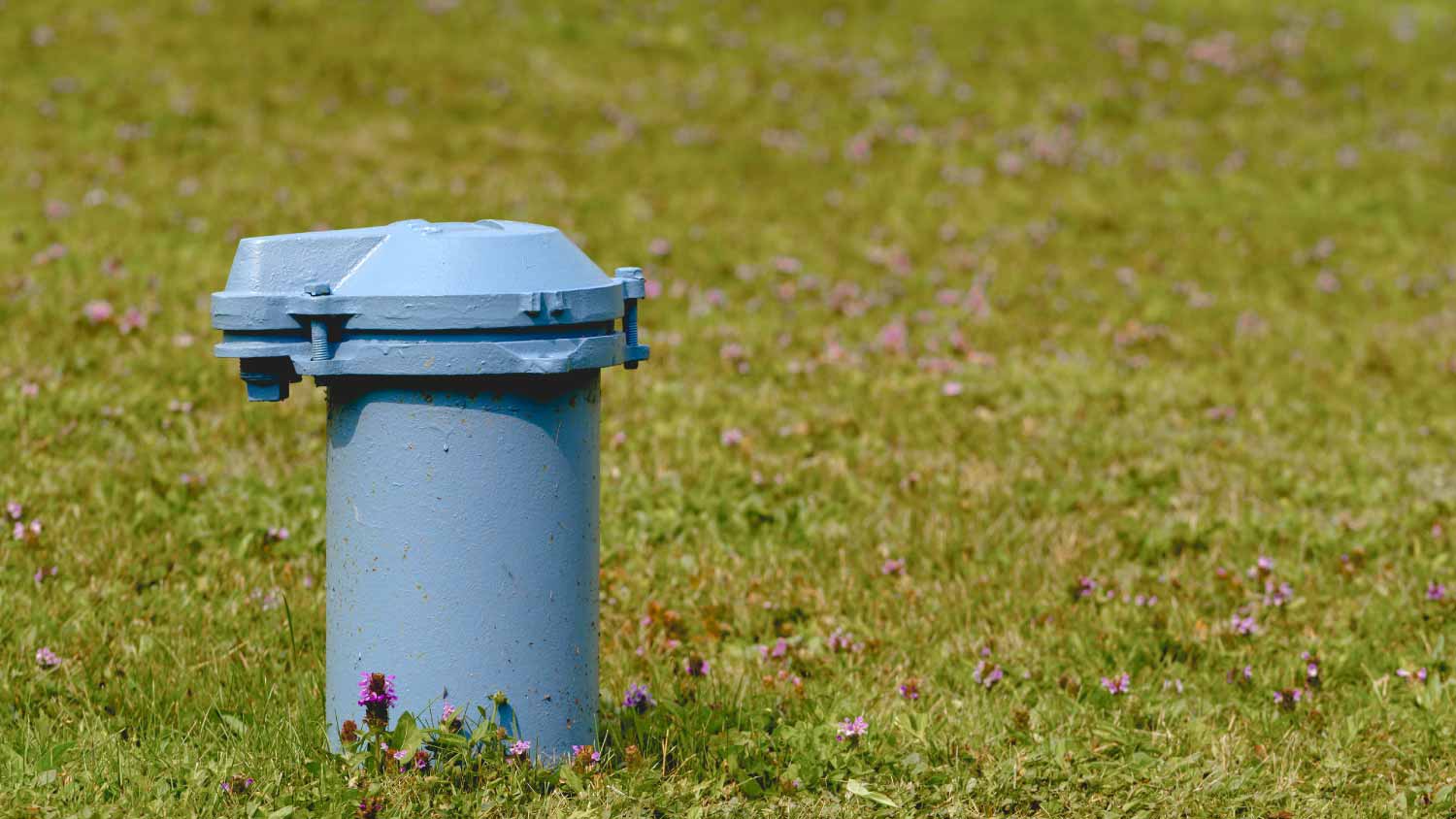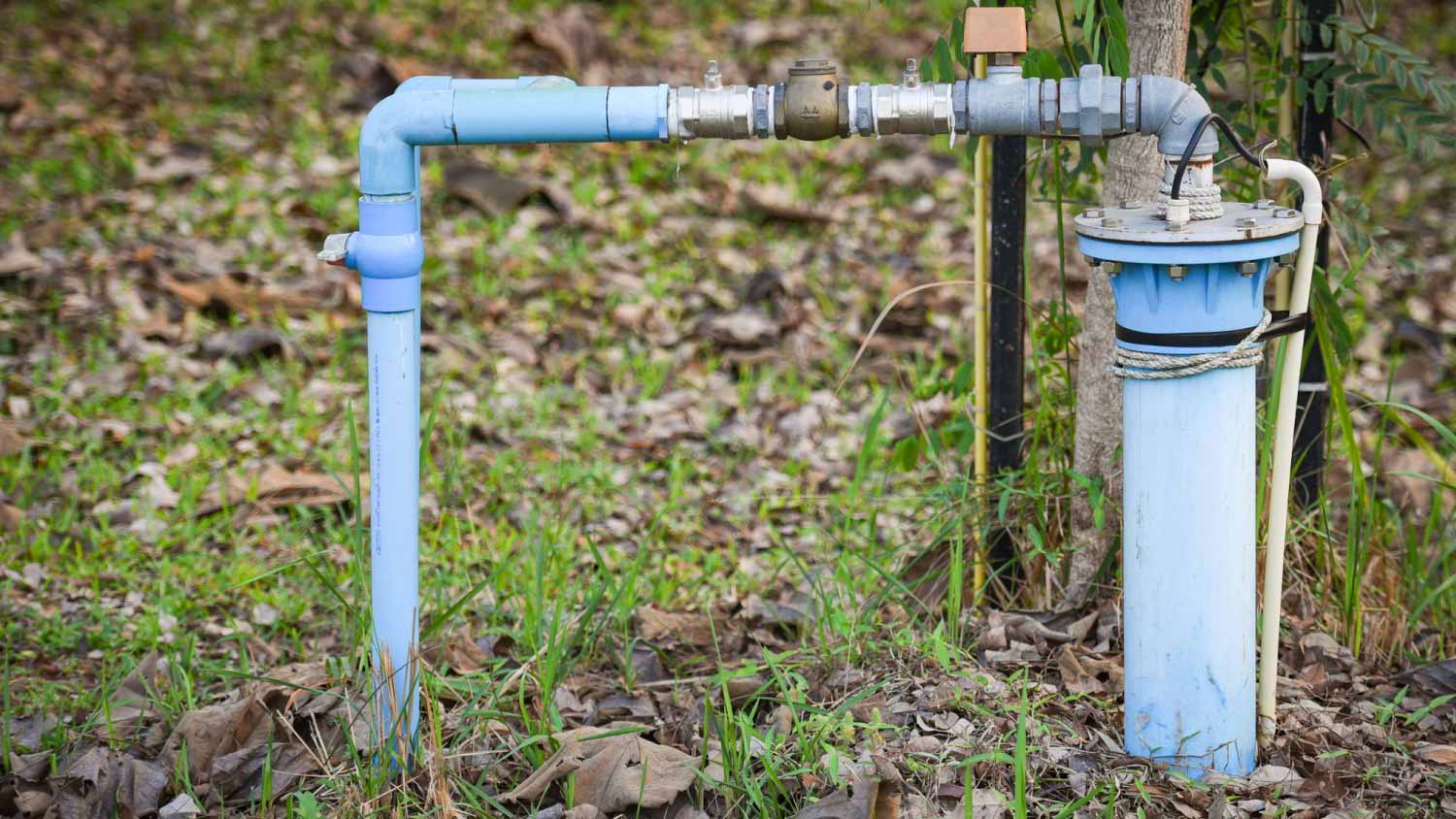How To Fix a Leaking Well Pipe On Your Own
Don’t go chasing waterfalls and stick to fixing the leak


When properly maintained, a well can provide a reliable and sustainable source of water—that is until it springs a leak. Even if you don’t have a completely broken well supply line, any leak in the system can be annoying and lead to potential damage. Thankfully, there are several methods to fix a leaking well pipe. Follow this leaky pipe repair guide to fix your well lines and return to a comfortable flow.
Why It’s Important To Fix a Leaking Well Pipe
When you’ve got a leaking pipe anywhere in your well pump system, it can lead to several possible problems. These may include:
Water damage to your home’s foundation
Reduced water pressure
Unnecessarily wasting volumes of water
Contamination of tap water
Overworking your well water pump
Damage to other well components
How To Identify the Leaky Pipe Location
The first step to leaking pipe repair is figuring out where the leak is in the first place. If all your well piping is above ground, this will be easier to diagnose than if you have underground water lines. Either way, you need to find the leak if you’re going to stop it.
Visual Inspection
Perform a visual inspection of your entire water line. Some signs may be obvious. If you see dripping or unexpected puddles of water, you may have found your culprit. The leak might also be at the well pump or pressure tank and not in one of the pipes.
Cracks and Connections
Look for damage or bad connections. One of the pipes may be cracked, or you may notice a pipe fitting or connection that has been compromised in some way. If the damage corresponds with excess water in the area, this might be the source of your leak.
Water Meter Reading
Read your water meter. If no water is being used in your home, but the water meter is still moving, there’s a leak somewhere in the system. It may be necessary to use an ultrasonic leak detector to find it.
Surface Pooling
Inspect your property for surface pooling. If your well water lines run underground, a leaking pipe may lead to the pooling of water at the surface. The area around the leaky pipe in your yard may be especially muddy. The only way to know for sure is to start digging.
How To Repair a Leaking Well Pipe

Before getting to how to fix a leaking well pipe, there are three main steps you need to take to prepare.
Turn off the water supply. Don’t get sprayed with well water under pressure while trying to stop a leaking pipe!
Confirm the correct materials. Not all leaking pipe repair supplies are suitable for all types of pipe materials and sizes. Read the packaging carefully.
Clean the pipe. Do your best to remove as much dirt, grease, and debris from around the repair point before starting, and dry it as much as you can.
Tighten the Pipe Connections
Sometimes, the only cost to fix a leaking pipe is a bit of elbow grease. It’s possible that the source of your leak is nothing more than a loose connection. Break out the monkey wrench from your plumbing toolkit and give the coupling nuts a bit of a turn. If this fixes the problem, then there’s no need to patch up a broken supply line at all.
Seal the Leaky Joint in Plumber’s Tape
Continuing with a focus on the connections and not the pipes themselves, tightening up the connections may not be enough. If that is the case, fixing a leaking well pipe may involve sealing a leaky joint. The watertight seals in the pipe threads may be overly worn.
To seal the joint:
Make sure all the pipe fittings are clean and dry
Wrap the threads of the pipe with some plumber’s tape
Reconnect the coupling nuts
Wrap the Leaky Pipe in Self-Fusing Silicone Tape
Plumber’s tape is great for sealing pipe connections, but what if the leak is in a well pipe itself? Depending on the plumbing pipe type, you may be able to repair the leaking pipe with self-fusing silicone tape.
The sealant provides a water-tight barrier between the water in the pipe and the outside air. Be sure to stretch the tape as you overlap tight layers around the leaky area. This type of tape is best suited for low-pressure lines.
Apply a Water-Tight Epoxy Putty Sealant
Similar to self-fusing silicone tape, epoxy putty is another option for a temporary pipe leak fix. It can stop a pipe from leaking by sealing the hole or crack. The putty starts soft and hardens naturally at room temperature.
When the leak area is clean and dry, score it with sandpaper.
Knead some epoxy putty until it is reasonably pliable.
Cover the pipe surface with the epoxy putty, ensuring it adheres properly.
You may need to apply pressure to some putty products.
Give the epoxy putty enough time to cure—usually just a few minutes—before testing if it worked.
As an extra measure, you may add a pipe repair cast or wrap. The cast wraps around the epoxy putty and hardens in place with a water-activated resin.
Use a Pipe Repair Clamp
A more robust option to stop a leaking pipe is a pipe repair clamp. The patch clamp may have a special pinhole leak repair component. The pin inserts into the leaking hole in the pipe and creates a pointed cone seal. Applying pressure, the cone seals the leak and can handle working pressures up to 2,000 psi. Pipe repair clamps without the pinhole repair component are available, too. They often include a neoprene rubber patch that is then tightly clamped into place to seal the leak.
Unscrew the bolts securing the clamp
Slide the clamp over the leaking well pipe
Ensure the rubber patch covers the leak area
Tighten the bolts and compress the rubber gasket
Replace the Damaged Pipe
Sometimes, a leaking pipe is beyond repair. At that point, you may need to replace the pipe altogether with a new one. Pipe replacement costs can vary, depending on length, material, and other factors. As a more permanent solution, replacing a damaged pipe will cost more than trying to reseal it. Expect an average cost in the $100 to $300 range for materials alone, plus labor.
How To Prevent Future Leaks From Forming

An ounce of prevention is worth a pound of self-sealing cure. It’s not just the pipes that are of concern. You may need to fix your well in other ways periodically, too. To reveal and address potential issues before they balloon into bigger problems, periodic well inspections are worth the cost.
After completing your leaking pipe repair job, take the time to inspect the entirety of your water line. Turn your water supply back on. As you run the water, check for any excess moisture around the plumber’s tape or epoxy putty. Ensure the repairs are holding up as they should. Then, look through the rest of the line for possible areas of concern.
DIY vs. Hiring a Pro
Repairing small, simple leaks along visible and easily accessible pipes is one thing. If your well pipes are above ground or the leak is somewhere closer to your home, you may be able to patch them up with some epoxy putty. But, if you have a completely broken well supply line, hiring a professional water leak plumber can save a lot of trouble and unnecessary frustration.
This is especially true with any underground water leaks. Local well pump repair companies have specialized equipment to fix these sorts of problems. Special devices use ultrasonic or radio waves to detect pipes and fix leaks. They may also use probes to detect high soil moisture levels, unusual air pressure, or movement in the soil.
Frequently Asked Questions
A leaking well pipe is quite different from if the well itself is leaking. To seal a leaking well, pour a cement mixture or bentonite into the space between the well casing and the borehole wall. The heavier cement collects at the bottom to form a solid seal, pushing lighter materials like mud and fluids up toward the surface. Professional well installation companies have the equipment to do this properly.
In the United States, a depth of 36 inches (three feet) for underground water lines is the accepted industry standard. This depth varies from location to location based on local conditions. In areas with colder winters, they may be buried deeper to prevent frozen well water pipes: This is usually at least six inches below the frost level. The International Plumbing Code calls for a minimum of 12 inches below grade.
Because well water is not artificially filtered or pre-treated, it may contain contaminants. As a result, it’s possible for well water to damage pipes based on what is in the water. Well water can be corrosive, slowly rusting and dissolving pipes, fixtures, and fittings. The corrosion can affect the taste and quality of the drinking water that comes out of the taps in your home.





- 6 Temporary Fixes for Leaking Pipes
- 7 Ways to Fix a Copper Pipe Leak: Temporary and Long-Term Solutions
- 10 Things to Do When a Pipe Bursts in Your Home
- How to Find Frozen Pipes in Your Home
- What to Do If Your Pipes Freeze and How to Unfreeze Them
- Can Cold Weather Cause Pipes to Leak? How to Fix and Prevent
- 10 Most Common Plumbing Problems Every Homeowner Should Know
- How to Tell if a Pipe Bursts in Your House Before Water Takes Its Toll
- Water Under Sink but No Leak? 9 Potential Causes and How to Find Them
- How to Measure Pipe Size (With a Handy Pipe Size Conversion Chart)










